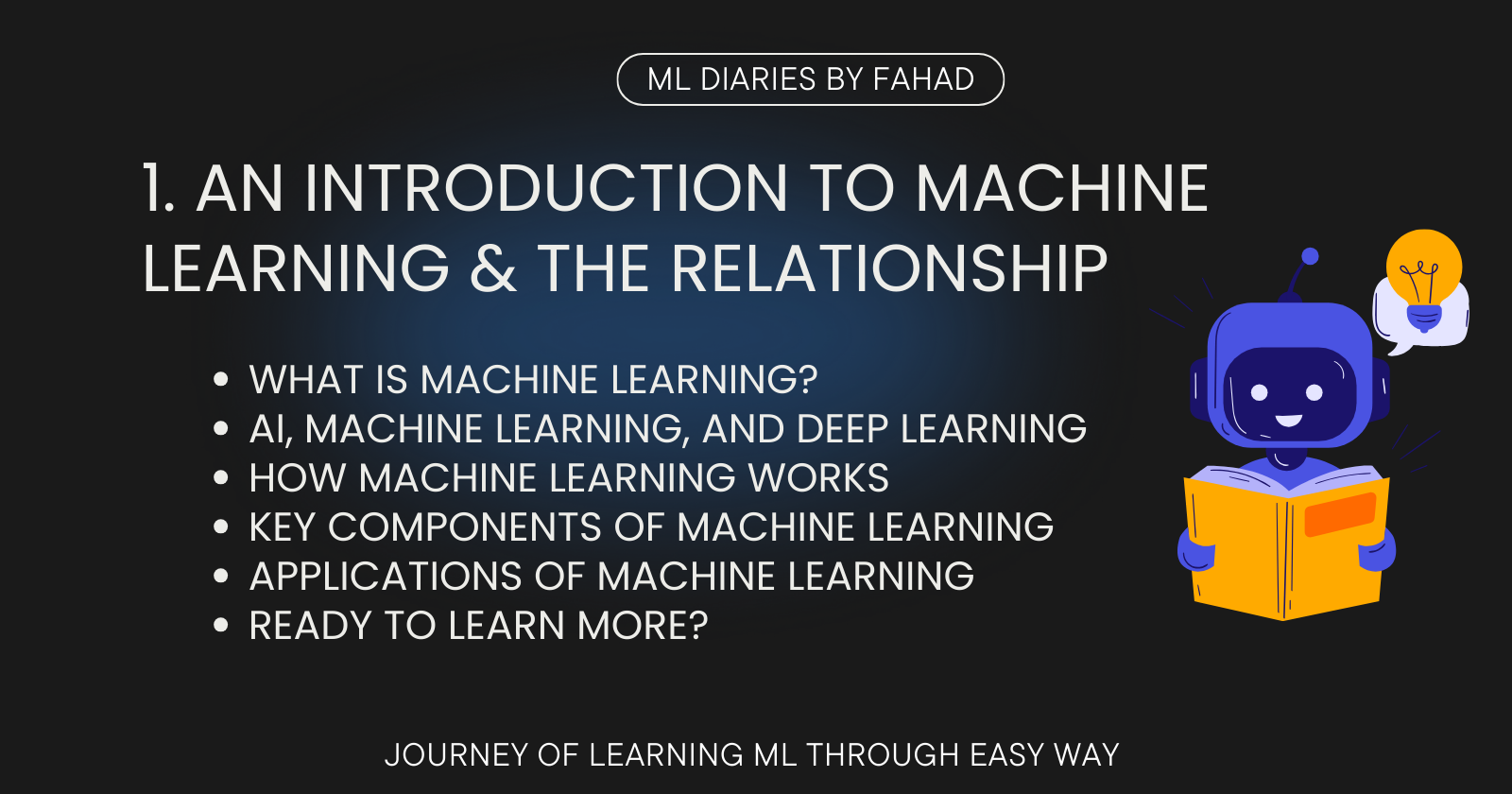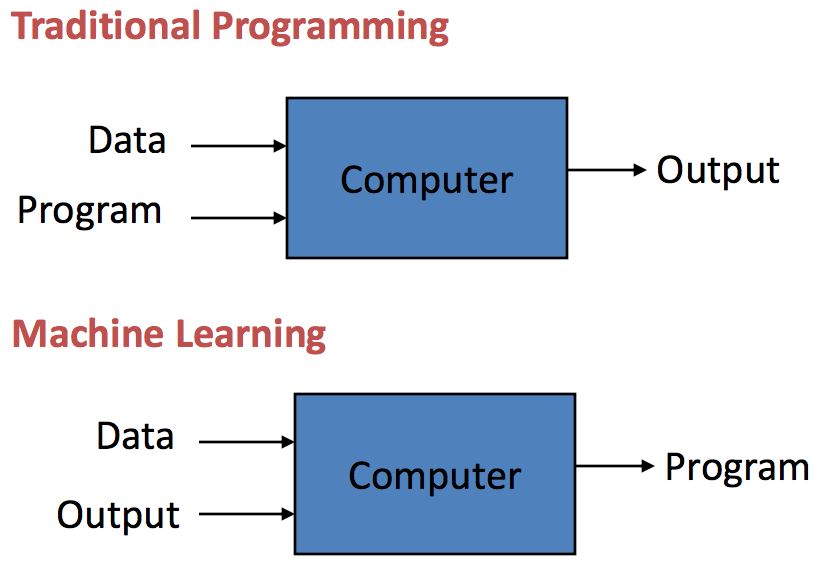1. An Introduction to Machine Learning & the Relationship
 Muhammad Fahad Bashir
Muhammad Fahad Bashir
Machine learning is changing how we interact with technology. It's everywhere, from suggesting what to watch next to helping doctors diagnose diseases. This guide will break down what machine learning is, how it works, and why it matters.
What is Machine Learning?
Before understanding this, we have to understand the overview of AI & ML.
AI
AI is the broader concept that encompasses the ability of machines to perform tasks that typically require human intelligence, such as decision-making, problem-solving, and learning.
ML
Machine learning is a subset of AI that involves teaching computers to learn from data without explicit programming. ML algorithms detect hidden patterns in data and use them to make predictions.

AI, Machine Learning, and Deep Learning
These terms are often used together, but they aren't the same. Think of it like this:
AI is the big picture. It includes everything that makes computers intelligent.
Machine learning is a part of AI. It involves algorithms that allow computers to learn from data.
Deep learning is a type of machine learning. It uses neural networks to analyze complex data.
When studying AI, there are two main types:
Artificial Narrow Intelligence (ANI): AI that focuses on specific tasks. Examples include self-driving cars and web search.
Artificial General Intelligence (AGI): The goal of creating AI that can do anything a human can do.
AI is a branch of computer science that enables computers to do tasks that normally require human intelligence. This includes making decisions and solving problems.
Machine learning is a part of AI where computers learn patterns from data. These patterns help them make predictions without being explicitly programmed.
Deep learning is a subset of machine learning. It uses neural networks with many layers to analyze complex data. It is inspired by the human brain and has been successful in areas like computer vision, understanding language, and recognizing speech.For deep understanding Follow the series
How Machine Learning Works
Machine learning uses algorithms to learn from data. In traditional programming, we provide rules and data, and the computer gives us results. With machine learning, we provide data and expected results. The computer then creates rules to predict future outcomes.

Deep learning, a subset of machine learning, uses neural networks with multiple layers to analyze complex data.
Here's a simple way to think about the difference between machine learning and deep learning:
Machine Learning: You extract features from the data yourself, then classify it to get a result.
Deep Learning: You feed the data into a "black box," and it automatically extracts features and classifies them.
In deep learning, feature extraction is automatic, while in machine learning, it's done manually.
Key Components of Machine Learning
Data: The information used to train the machine learning model.
Features: The important characteristics of the data.
Algorithms: The set of rules the computer follows to learn.
Model: The final product of the learning process, ready to make predictions.
Loss Functions: Used to measure how wrong the predictions are and guide the optimization process.
Training Data: The data used to train the model.
Testing Data: The data used to evaluate the model's performance.
Hyperparameters: Settings that control how the learning process works.
Applications of Machine Learning

Machine learning is used in many fields:
Healthcare: Predicting patient outcomes and improving diagnoses.
Finance: Predicting market trends and managing risk.
Consumer Technology: Recommending products and personalizing experiences.
Autonomous Vehicles: Powering self-driving cars and drones.
Smart Cities: Optimizing energy use and managing traffic.
Machine learning is also used for facial recognition, spam detection, and cybersecurity.
Ready to Learn More?
Machine learning is transforming the world by enabling machines to perform tasks that once required human intelligence. If you found this guide helpful, Follow us in this journey
Subscribe to my newsletter
Read articles from Muhammad Fahad Bashir directly inside your inbox. Subscribe to the newsletter, and don't miss out.
Written by
